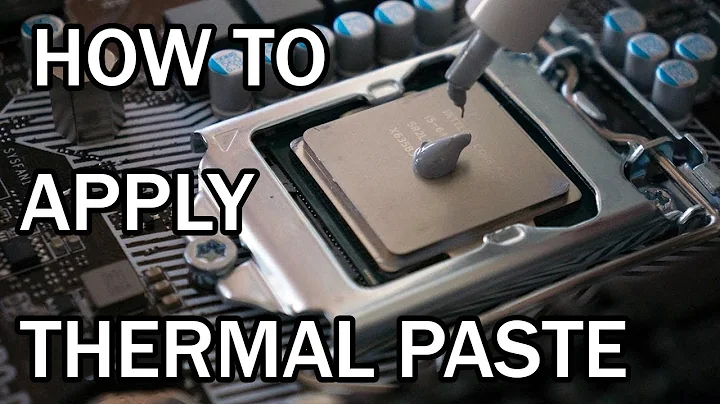Thermal paste was installed on my new heatsink. Does it need to get re-applied if I remove it?
Solution 1
Unless the paste looked like a dog's breakfast after separating them, there will probably be no need to clean it off and reapply. Of course, if it looks too clean then it may be that the protective plastic was never removed from the layer of paste in the first place...
Solution 2
It does not sound like a thermal paste problem... If you have removed the heat-sink multiple times it is advised you clean and re-apply thermal paste especially if you did not twist the heat-sink as you pulled it off discharging any vacuum that may have formed, because what will happen is the thermal paste will form bubbles in that already thin layer and then will act negatively as to the job it was there to complete in the first place...
Now for what I think your real problem is, your heat-sink should have some sort of 2, 3, or 4 pin connection to plug into your motherboard and it should be plugged in to the CPU_FAN slot or your computer will fail to realize that you have a heat-sink on your CPU and think there is a fire in your case often showing temps between 80C and 100C. So make sure it is plugged into the correct spot and if you don't have a plugin then you will need to disable it in your BIOS.
Related videos on Youtube
Kris
Updated on September 18, 2022Comments
-
Kris over 1 year
I just installed a new i5 Sandy Bridge on an Asus P67 Sabertooth board. When I first turned it on, I received a Bios error stating there was a CPU overheating issue. I was able to navigate to the Bios settings, and the temp said 100ºC. That's obviously wrong because the computer was only on for less than a minute.
So, I ignored it and tried installing windows, etc.
I got nervous though as I read more with how bad or nonexistent thermal paste and burn out a CPU. I didn't apply any thermal paste because the heatsink came with stuff already on it. But I got nervous it wasn't properly applied, so I removed the heatsink. I saw that it was applied for the most part, and saw no issue, so immediately put the heatsink back on the CPU.
Now -- my question:
Do I need to scape off the stock thermal paste and apply my own since I removed the heatsink for a few seconds, or will I be fine?
Some data points:
- using RealTemp, my CPU was clocking around 33ºC consistently.
- the stock thermal paste spread over about 2/3rds of the CPU.
-
Thalys over 12 yearsUnless things have changed, stock heat sinks came with thermal pads, which are a lot more forgiving than thermal compound
-
Amos M. Carpenter over 12 years@JourneymanGeek: yeah, normally. My point was that this is not the sort of thing you want to use "chances are" phrases with ;-)
-
Thalys over 12 yearsand by modern, i mean in the last ten years. And if it dosen't just shut down, you get wierdness, but i rather doubt any modern processor after the infamous burning AMD would have lasting issues from a short period of overheating
-
Amos M. Carpenter over 12 yearsa) Are you seriously recommending, then, @JourneymanGeek, that people be incautious with this sort of thing and not take high temperature readings seriously...? Even if your CPU is not immediately fried, you'll reduce its life each time it overheats. b) Spontaneous iPhone Combustion and recalls of several types of Dell machines due to overheating would disagree with your "any modern processor" statement. c) Why are we even arguing about this...? If you have an alternate answer, feel free to post it. I'll continue to recommend caution.
-
Thalys over 12 yearsall of which are battery related. Overheating would have other symptoms - slowdowns, stuttering and shutdowns.It would shorten life, but i don't see any other symptoms noted.




